Inside CiRCA. Photo by Lucas Oleniuk / Toronto Star.
Article originally published October 22, 2012 by The Grid online (thegridto.com).
In this edition of her Toronto-nightlife history series, Denise Benson revisits the biggest, most ambitious, and most fatally expensive nightclub the city has ever seen.
BY: DENISE BENSON
Club: CiRCA, 126 John St.
Years in operation: 2007-2010
History: The four-storey heritage property at 126 John St. has housed many businesses since its main structure was built in 1886. Originally, it was the site of John Burns Carriage Manufacturers, followed by other industrial-machinery companies.
By the early 2000s, the 53,000-square-foot space was an anchor for play in Toronto’s bustling Entertainment District. Mondo video arcade Playdium gave way to mega-dance club Lucid in 2004. The heavily hyped commercial club lasted only a year; its doors were locked in July 2005 when more than $400,000 in back rent was owed to landlord RioCan. (You just don’t mess with Canada’s largest retail real-estate firm.)
Enter New York City club magnate Peter Gatien. The Cornwall, Ontario native had moved to Toronto in 2003, following deportation from the United States. Gatien is, of course, one of the world’s most famous nightclub impresarios, having owned deeply imaginative and influential N.Y.C. hot spots including Limelight, Tunnel, Club USA, and Palladium during his 30-year career.
The one-time millionaire’s very public fall has been well documented in both print and film. To recap: New York police and the Drug Enforcement Agency (DEA) pursued Gatien relentlessly in a 1996 federal investigation that attempted to directly link him with the sale of street drugs, particularly ecstasy, in his clubs. Gatien was acquitted, and then later arrested on tax-evasion charges, to which he pled guilty.
Once in Toronto, Gatien—later joined by wife Alessandra and their son Xander—was interested in exploring a boutique-hotel concept. He tells me during a recent phone interview that a RioCan representative approached him in a park, during a dog walk, in the fall of 2005, and requested that Gatien pay a visit to 126 John.
“I said I didn’t want to do a club, but agreed to go look at it,” he recounts. “Then I saw the space, knew there was a lot of potential, and got excited. I loved the fact that it was large, had high ceilings, and many rooms. There was the ability to have a number of different spaces and soundsystems, and cater to a real cross-section of society.
“It was the right opportunity,” Gatien summarizes, adding that his interest also lay in the fact that “Toronto has a really large creative community. There’s a lot of art here, a lot of fashion, a lot of music comes out of this city, and you need this to sustain what I like my clubs to be.”
Gatien’s enthusiasm to develop what would become CiRCA nightclub led to an initial partnership with the men of Hingson Corp, former owners of failed evening spots including Eight Below, Banzai Sushi, and Fez Batik. A 10-year lease commencing April 1, 2006 was signed, with monthly rent averaging over $135,000. Their business relationship fell apart about eight months in. While Hingson made off with the original website URL, Gatien and his team sought investors and worked to build a superclub that promised to be both spectacular and open by summer of 2006.
Litigation lawyer Ari Kulidjian, who’d advised Gatien during his split from Hingson Corp, became Gatien’s equal partner in Arena Entertainment, the new driving force behind CiRCA. Kulidjian became a co-director, shareholder, creditor and Chairman of Arena’s Board of Directors while Gatien served as co-director and president.
The pressure was on, with costs mounting. Although Kulidjian would help secure more than a dozen key investors—including financier Stephan Katmarian, who also become a co-director in Arena Entertainment—the club’s opening was delayed for more than a year. The Alcohol and Gaming Commission of Ontario (AGCO) was hesitant to grant a liquor licence. It held hearings, deferred the decision and, after finally awarding a license in July of 2007, took the unusual step of appealing its own verdict. (Courts later dismissed the appeal and ordered the ACGO to pay CiRCA damages for legal fees.) It’s thought that the City’s concerns about the Entertainment District—specifically the rowdy throngs that packed nightclubs on weekends—played a role in the hold-up.
“I don’t know if it was even so much directed at us,” ventures Gatien. “I think councillor Adam Vaughan’s plan for the area was to not have clubs and [the City] seemed to feel that if CiRCA was successful, it might keep clubs in the Entertainment District.”
Whatever the reasoning, that process and the resulting year’s delay forced Gatien and company to take out ridiculously expensive bridge financing and other loans—some at rates higher than 30 per cent—to stay afloat.
“They were paying rent and staff for more than a year, without any income,” explains Orin Bristol, a former manager at Toronto’s Limelight (no connection to Gatien’s namesake New York club) and System Soundbar who would be hired as CiRCA’s first general manager in July of 2007. “DJs, bookings, suppliers—everything had to be put on hold. Deposits were lost, and relationships were strained.”
A number of optimistic opening dates came and went, with artists including Gary Numan, DJ Tiesto, and Junior Vasquez all booked for shows that had to be cancelled. Talented staff members, like former Drake Hotel entertainment director Jeff Rogers, left before the club opened because pay wasn’t always available. Hired by Gatien to curate music and art, Rogers did manage to book an exhibit of Bruce LaBruce photos and bring event promoters A.D/D. into the fold before departing for a career in music management and television. (He’s now Music Director at AUX TV.)
Other early CiRCA team members—including New York interior designers AvroKO and Travis Bass, N.Y.C./Toronto designer and art director Kenny Baird, Kidrobot founder Paul Budnitz, event promoters Craig Pettigrew, Mario J, Eve Fiorillo, and Rolyn Chambers, and manager/promoter Steve Ireson—helped ready the club and spread the word around the city.
On Oct. 4, 2007—one-and-a-half years, over $6 million, and a whole lot of anticipation later—thousands packed CiRCA’s opening night, largely oblivious to the mad scramble behind scenes.
“We were literally bringing liquor in the back door as the front door was opening, because we had only gotten our licence, allowing us to purchase liquor, that day,” Gatien recalls. “Seeing it all come together after all of the energy and the effort from so many people was very gratifying.”
Why it was important: “Peter’s vision brought a certain excitement that only he can bring,” says longtime DJ/producer and former co-owner of Industry Nightclub Mario Jukica, hired to promote Randomland Fridays with A.D/D. production partner Fiorillo.
“Toronto never had such a buzz about any club opening before,” he enthuses. “The climate at the time was completely stale; other clubs in the city had no forward-thinking vision, and that’s why we created such a stir. People were ready for something next-level.”
CiRCA—Gatien’s first Canadian club venture since he left for the U.S. in the late 1970s—was the largest club in the country, both in scope and size. It was also a massively innovative addition to the rapidly changing Entertainment District, by then far more known for fights and public drunkenness than cutting-edge culture.
“The important thing to me in creating a club is to recognize that we’re there for one sole purpose and it’s to create culture, whether through art, music, or fashion,” says Gatien of his impetus. “You want to be an instigator for culture, and you want to have as many creative people as possible in there, exchanging ideas and having a good time.”
At CiRCA, these exchanges took place in seven distinct spaces: the Kidrobot room, Mirror Ballroom, Washroom Bar, Fathom22 Bar, Sensacell Bar, Cinema Lounge, and the massive Main Room. Each was its own wonderland, worthy of exploration and awe. Then there was the brilliant VIP Cube (impossible not to gawk at), the art-filled entranceway, and various connecting corridors, each a trip in their own right. (Details and photos of each room, along with archived event photos and more can still be viewed on CiRCA’s website.)
“The concept was to provide a space for everyone to feel comfortable within a huge space—to build clubs within a club and create an atmosphere for a healthy mix of people to interact with each other, in and out of their comfort zones,” says CiRCA’s artistic director, Kenny Baird. “Entertainment comes from within, from strange and fun experiences, and the exchange of personalities.”
A fellow Cornwall native who grew up near Gatien and would be reacquainted with him in 1980s New York, Baird is a great talent who was largely responsible for what we saw, touched, and snapped photos of at CiRCA.
Baird’s distinctive aesthetic and impressive work history made him an ideal fit for CiRCA. His C.V. ranges from graphic layout for Toronto art collective General Idea’s File magazine to design of Toronto clubs including Charles Khabouth’s Stilife, co-designing landmark Manhattan social spaces including Area, Club USA and The Maritime Hotel, and working as production designer or art director in films, commercials, and music videos for the likes of Bowie, Nine Inch Nails, and Leonard Cohen.
He split his time between the club’s interior-design and art installations, and assembled an in-house art department—complete with its own budget, staff, workshop area, tools, and materials—to cloak the club in regularly updated themes, like “fetish,” “carny sideshow,” and “heroes and villains.”
“The attention to artistic detail and décor within the venue made CiRCA stand out from any other club that I had been to in Toronto,” offers veteran party producer Pat Boogie. He first came to the club as a patron, then worked as a marketing manager from June 2008 to June 2009. “The look of the club was constantly changing, with different themes carried throughout the space, including showcase windows in the front of the venue and in the main entrance hallway—many times complete with live models!”
“The actual physical space was horrible,” recalls Bristol, who’d initially hesitated to work at CiRCA. “It was cavernous and looked like a shopping centre, with too many floors and winding hallways. But when you took Peter’s vision, added a whole lot of Kenny Baird’s brilliance—his mannequins in the washroom hallways are still the coolest things I’ve ever seen in a nightclub—excellent promotions, and a whole lot of hype and expectation, it became a magical kingdom. CiRCA was a giant departure from the norm.”
Gatien is clear as to why: “I learned at a very young age that it’s not a matter of having miles of neon chrome, spinning wheels, lasers, and that kind of shit. You can make that kind of exciting, but the art component and the installations [at CiRCA] were really museum-quality with the thought that went behind them. On a related note, you may not make a lot of profit from art and fashion events, but you maintain or add to your credibility with the real trendsetters and the creative community in your city.”
Just as important, Gatien recognized that, to fill his 3,000-capacity club and pay the bills, CiRCA would need to host a range of events and communities. A.D/D’s Randomland Fridays were meant to attract an edgy and diverse downtown crowd while Pettigrew and his GEM Events presented Traffic Saturdays, hugely popular with deep-pocketed suburbanites, socialites, and celebrities.
Bristol gives a revealing overview: “Saturdays were your typical hot new club crowd in Toronto. There were 3,500 to 4,000 well=dressed people, mostly 905ers, and a lot of bottle service. Booths went for $1,500 to $5,000 on a regular basis, and we had several high rollers who came through and spent obscene amounts.
“On Fridays it was a totally different story; we only did around 2,000 to 2,500 people maximum on this night, but it was amazing. The crowd was incredibly diverse: young, old, black, white, Asian, straight, gay, bi, trans, hipsters, b-boys, artsy, goths—it was nuts. The music was eclectic, and we had a nightly costume parade where you could see Gumby dancing with Raggedy Andy. The crowd seemed to not notice or care about their differences; they were there to party.”
In 2007, A.D/D was the hottest and hippest underground party-production company in town. Jukica and Fiorillo headed the post-rave electro movement in T.O., and were ready to lead their colourful crowd to a large venue.
“At Randomland, you could show up dressed as an alien or whatever you wanted, and it would be considered normal—just as I think it should be at a proper nightclub, in a healthy nightlife,” says Fiorillo. “We wanted to create a fantasy world, with characters that lived there, and have a random theme every week so that we could play with different ideas and people would always be caught off-guard.”
Along with bouncy castles, regulars who dressed in costumes, and a weekly parade of characters who “would sparkle down the two flights of escalators” in CiRCA’s main room, there was a musical mix of electro, techno, house, hip-hop, disco, and more.
“Randomland was a culmination of the past, present, and future of electronic live acts and DJs,” summarizes Jukica.
Local DJs including Barbi, Andy Ares, Rynecologist, Filthy Gorgeous, and Kid X (a.k.a. the Gatiens’ young son Xander) played regularly in different rooms while then-rising Toronto duos Crystal Castles and Thunderheist both performed live. Most weeks boasted big names in the underground, ranging from Diplo, Cut Copy, Kavinsky, Moderat, and Simian Mobile Disco to Kevin Saunderson, ?uestlove, and DJ Premier.
Randomland also benefited heavily from the sizable gay crowd that Rolyn Chambers, a FAB magazine columnist in addition to his CiRCA duties, and Steve Ireson attracted while collaborating with fellow promoters like Matt Sims and Daniel McBride.
The spacious and sexy Mirror Ballroom came to be seen as “the gay room” as Chambers and Ireson programmed local queer DJs like Mark Falco, Jamal, and Dwayne Minard and performers including Lena Love, Sofonda, and Gia.
“I once rented a scissor lift for Lena Love’s performance in the Mirror Ballroom,” recalls Chambers. “She and her 50-foot white skirt were lifted to the roof of the building. Gia’s winter performance in 2007 was also a highlight. I rented a snow machine, which created a blizzard for her show. We left it on all night and watched as people danced under the falling snow.”
“The Mirror Ballroom on Friday nights was a great success,” adds Ireson. “It was always packed, and often ended up pulling adventurous people from the Main Room where Randomland was happening.”
Chambers, in fact, feels this is why he was let go from CiRCA nine months after it opened, claiming that “Eve and Mario wanted to close the Mirror Ballroom because they felt the night was becoming too gay.”
Fiorillo, writing independently of Chambers’ comment, states that A.D/D “wanted our night to be evenly mixed. Our intention wasn’t to segregate the crowd.”
For his part, Jukica most recalls the night’s overall vibe: “In Randomland, we created an intensely excited atmosphere for a generation of kids that will not be forgotten. I have just as many people come up to me to say how that was the most exciting period of their lives for clubbing as I do for Industry. If you were 19-to-25 in Toronto during Randomland, and went there, you know what I mean.”
For Traffic Saturdays, Pettigrew and his GEM team—which also included DJ/promoter Nitin Kalyan, Darren Arcane, Nikita Stanley, and others—had different goals entirely.
“We really wanted to produce a cool house-music vibe that was more like a Pacha Ibiza or LIV Miami, so it was more focussed on tables and booze,” says Pettigrew, who’d come up promoting parties at Toronto clubs including Limelight, System Soundbar, and Turbo.
Pettigrew also DJed at Traffic, along with DJ/producer James Doman. Now based in Los Angeles, Doman broke out as a producer with his duo Doman & Gooding during his time at CiRCA. The video for their 2009 club smash “Runnin’” was filmed primarily in the club’s VIP areas.
Saturdays were all about living large: big crowds dancing to big room sounds, with big-name DJs frequently on deck. Traffic featured huge DJ names, including David Guetta, Tiesto, and Bob Sinclar. Pettigrew recalls two personal favourites.
“Danny Tenaglia played some marathon sets; I wouldn’t leave the club till 3 p.m. the next day! Those nights were really special. The [October 2008] Carl Cox night was insane. I’ll never forget that party because Carl really turned it out, and people were just in the mood to party. The vibe was explosive.”
Who else played/worked there: CiRCA hosted a number of concerts, many of which are talked about to this day. French duo Justice performed to a frantic Thursday-night audience, just two weeks after CiRCA opened. Lupe Fiasco, Kanye West, Pharrell Williams, Rihanna, and others all shared the stage in March 2008. Wyclef Jean performed months later. Lady Gaga’s November 2008 show was her first in Toronto.
Crookers, DJ Sneak, and Funkmaster Flex all DJed at CiRCA. Pat Boogie also booked in deeper house DJs including Dennis Ferrer, Martinez Brothers, and FilSonik. Popular local hip-hop, R&B, and Top 40 DJ Baba Kahn held court on Thursday nights for a period (and would later be booked as the main resident at commercial night Reason Fridays, where he was joined by the likes of Pitbull).
Chambers also proudly recalls high profile arts-based events that he helped co-ordinate.
“Having Greta Constantine’s fashion show at the club was a huge coup for CiRCA. Having the first-ever Kidrobot fashion show was also a major triumph. We were able to work with 20 prominent Canadian fashion designers who designed outfits for the iconic Munny dolls. People were able to bid on them, raising money for War Child Canada.”
Of course, staging productions and running a proper nightclub required a small army of staff, including dozens of bartenders, waiters, bussers, and security people. Technical director Russell Edwards oversaw production details during CiRCA’s first year while Ashley MacIntyre did essential double duty as director of marketing and corporate relations.
“When I came on board eight months after CiRCA opened, it seemed like most of the kinks associated with opening a new venue had been ironed out and the team they’d assembled was working well together,” recalls Pat Boogie. “It was very exciting to be working in Canada’s largest club and among so many talented people.”
In its first year, CiRCA was the place to be. It was even recognized on the global stage—rare for a Toronto club—winning “best new club” honours at the WMC’s 2008 Club World Awards. But the cracks were starting to show.
“When I was working there, we all knew that the club was in major trouble financially,” admits Boogie. “Not only were they behind on paying many of their main in-house staff, they were also behind on paying many outside contractors. It was a very difficult and extremely stressful situation on a daily basis.”
The beginning of the end: It’s impossible to discuss CiRCA without addressing the financial troubles, variety of court cases, and competing economic and artistic priorities that ultimately led to its downfall. The fact that CiRCA opened carrying millions of dollars in debt is irrefutable. Once doors had opened, the priority was paying rent, the interest on those early loans, and for day-to-day operations. There was a swirl of rumours about who or what was paid under Gatien’s watch.
“Talk to any bartender, waiter or bus boy who was there; I never missed a payroll,” Gatien insists. “When I was there, we also never missed our withholdings to the government, we were current with our rent, all that stuff.”
“The staff was getting paid for the most part at that point,” verifies former general manager Bristol. “Sometimes it was late, but it always got paid. I was behind, but the other managers were not, and the promoters were behind.”
Arena Entertainment already owed more than $600,000 in back rent by the time CiRCA opened in October 2007 (according to a Notice of Intent and Proposal from Arena’s eventual 2010 Bankruptcy and Insolvency Act [BIA] court proceedings), but RioCan did not provide monthly specifics prior to April 2007, despite Kulidjian’s repeated requests. The landlords do not appear to have initially demanded arrears, but instead made compromises and granted credits towards CiRCA’s rent. RioCan Statement of Arrears (SOA) figures from November 2009 do indicate that CiRCA’s monthly rent was generally kept current during its first year of operations. The big troubles began in December 2008, when—according to the aforementioned SOA—rent was not paid in full, followed by no payments in both January and February 2009.
This was a time of great turmoil at the club. By late 2008, Ari Kulidjian had hired accountants to do a financial audit, ostensibly with the goal of cutting CiRCA’s costs. This not only led to a falling out between Kulidjian and Gatien over the funds devoted to the club’s art department, aesthetics, and DJ/performer fees, but also a $20 million civil lawsuit that pitted the two (and related parties) against one another. Kulidjian and Arena Entertainment accused Gatien of financial mismanagement, breach of contract, slander, and more. Gatien, in a counterclaim, filed for breach of contract and back pay. (The lawsuits were dismissed for delay in 2011.)
Things came to a head when Gatien resigned in February 2009, leaving Kulidjian and Stephan Katmarian as the remaining co-directors of Arena Entertainment Inc. In a January 2010 affidavit (from the Arena Entertainment vs. Peter Gatien, PJG Holdings Inc. and Alexandra Gatien proceedings), Kulidjian stated that Gatien had quit in response to meetings of Arena’s Board of Directors in which the Board had criticized Gatien’s “mishandling of Arena’s financial affairs.”
Gatien tells me he left CiRCA because “I was not going to be associated with something that I considered to be a sub-standard product. Long story short, I very much believe that you have to continually reinvest in your club. That’s why our art department was so extensive, our installations changed all the time, we reinvented all of the rooms, and that sort of stuff.
“My two primary partners [Kulidjian and Katmarian] saw that as a waste of money and felt that we should cash in and just become a bridge and tunnel [suburban/commercial] club. I got tired of trying to explain that if you want to last 10 or 20 years in the business, you can’t be shortsighted on your profits and try to shortchange the public. The art component of the whole club and the DJs—to do it right costs money. There’s a lot that goes on behind making a place become an institution versus a place that’s just okay.” (Ari Kulidjian rejected my requests for an interview, stating only that I should refer to the court documents related to Arena’s BIA proceedings.)
Following Gatien’s departure, things took a turn for the worse. Just weeks after, in March 2009, RioCan made a formal demand for payment of CiRCA’s full arrears, listed as $822,754.58, within seven days. A series of such demands did result in Arena, under Kulidjian and Katmarian, prioritizing monthly rent and payments towards arrears for a period. But other aspects of CiRCA suffered: the club’s art department was unceremoniously closed that month.
“I showed up for work one day and was told that I was no longer allowed on the property—not even to clear my desk of personal belongings,” says artistic director Baird, who has worked to design a number of INK-owned clubs of late, including the soon-to-open Uniun Nightclub at 473 Adelaide W., former home of Devil’s Martini.
“After a solemn promise from these investors to pay me back wages of approximately $30,000 they instead cut the art department down to the one person—someone we had hired as a costume seamstress. It was all done with the hidden agenda of catering to the lowest common denominator, thinking that the patrons wouldn’t know the difference or care.”
“After Peter left, the directors and the powers that were left over became a lot tardier with their payments,” adds Bristol. “Some people’s payments stopped totally.”
Promoters including Chambers, GEM, and A.D/D all mention promised pay that was never received.
“Peter definitely started to ring up the unpaid bills, but it really started when he left and the guys who took over thought they could run the club by not paying people at all,” offers A.D/D’s Mario Jukica. “Slowly but surely, when you don’t pay people, they start to talk. When you stop paying promoters, people stop coming.”
As a patron, it was hard not to notice that CiRCA no longer felt as magical, that damaged furniture was slow to be repaired, or that DJ and entertainment bookings dried up.
“The art and the vision were gone,” says Bristol. “The creativeness slowed and then came to a halt.”
Bristol left two months after Gatien, going to the Guvernment and taking a lot of CiRCA staff with him. (Bristol continues to work for Charles Khabouth’s INK Entertainment; today he is director of venue operations for the company.) The turnover didn’t stop there. By mid-summer 2009, A.D/D and Randomland Fridays were no longer on the roster.
“When Peter left, the life force left with him,” says Jukica.
“CiRCA was Peter’s vision, and with him gone it just didn’t work,” agrees Pettigrew, who ended his highly profitable Traffic Saturdays around the same time. “GEM had to move on. The new owners just didn’t get it, so we decided it was best we leave.” (Pettigrew now lives in Los Angeles and is one of the driving forces behind the fast-growing BPM Festival, held each January in Playa del Carmen, Mexico.)
CiRCA’s programming became decidedly mainstream; Top 40, hip-hop, commercial dance music and bikini competitions became common as Arena worked to draw larger crowds and income. Reams of email correspondence between Arena and RioCan paint the picture of a club in trouble.
By August 2009, contributions to monthly rent were paid only after repeated landlord requests. Court documents from Arena’s BIA proceedings include binders full of emails outlining their excuses. Two bounced cheques in September were followed by a low payment in October and zero rent paid in November. On Nov. 5, after repeated notices of default, RioCan demanded full arrears of $789,550.76 by Nov. 12.
On Nov. 11, filing under the Canadian Bankruptcy and Insolvency Act, Arena Entertainment put forward a Notice of Intention with a Proposal to restructure and modify existing arrangements with their more than 150 creditors.
This would have led to some—including Toronto oil executive Robert Salna, a primary investor who reportedly sunk more than $1.8 million into CiRCA—being paid in full over a longer period of time while other creditors would receive only a percentage of what they were owed. Multiple creditors, including RioCan and the Royal Bank of Canada, immediately opposed Arena’s Proposal, resulting in a series of related court hearings.
Many close to the club believe all this should not have been necessary.
“During CiRCA’s first year, we did $14 million of business, which is a lot in Toronto,” says Gatien. (This figure was reiterated by Bristol, although a 2010 Globe and Mail article references court filings that suggest $7 million in revenues was a more likely number.)
“That club made a lot of money,” Gatien asserts. “We actually reduced the debt by a couple of million dollars in the first year.”
Others offer figures that back up Gatien’s claim. Experienced club and restaurant owner/operator Yigal Bensadoun was brought in as CiRCA’s general manager in October 2009 by Arena’s insolvency trustee, Hans Rizarri of Soberman Chartered Accountants.
“The club was a disaster from top to bottom,” writes Bensadoun by email. “I had to hire a whole new team within the first week to rebrand CiRCA and create something exciting in a place that had already been around for two years. It was a huge challenge to make it work again.”
He states that when he started, “Sales at CiRCA were averaging $45,000 a week. The place needed to generate $75,000 per week to stay afloat.”
Bensadoun also offers that, in working with Rizarri, “we were able to bring the sales up to well over $140,000 a weekend, and were able to show profits within the first month of operations.
“What was mind boggling is that sales on Saturday nights reached over $200,000 when the club first opened, and towards the end of CiRCA, those numbers were there again.”
What happened to it: Bensadoun, who now manages INK’s This Is London nightclub, describes a damning scenario.
“Money started coming in again, and the partners started to pay close attention to where the monies were going. The owners were not interested in paying down the debt to suppliers, bank loans, and RioCan. I had a deal in place in order to pay the landlords back, but they were more interested in getting back their investments.”
A Notice of Default served by RioCan on March 12, 2010 does state that Arena owed $79,357.52 in rent for the month of March, and that they should pay by the next day or the lease could be terminated.
“At that time, I couldn’t reinvest the money into the club by trying to bring new attractions, artists, and DJs to maintain the popularity that we’d regained,” states Bensadoun. “Things could have gone differently; the club earned enough money, and then some, to keep the place alive.”
The various efforts, arguments, and court cases became irrelevant. On March 24, 2010, CiRCA declared bankruptcy. Almost $9 million was owed to creditors; bankruptcy was declared after the Royal Bank demanded repayment of a $249,000 loan.
Receivers were called in on March 24, 2010, to begin the process of distributing CiRCA’s assets, valued at just $62,004.
Those of us who marveled at the club’s existence and potential are left to wonder what could have been.
“Even though CiRCA was not a financial success, it still left its mark on this city, and raised the bar for creativity, originality and style in a ‘super club,” says Pat Boogie. “It also brought an element of musical and artistic variety not seen on this level in Toronto.”
“CiRCA showed me what the next level of nightlife should be,” adds Bristol. “You always hear people saying that people, things, or products were ahead of their time; CiRCA actually was.”
“I was very proud of CiRCA,” says Gatien. “I was very proud of the staff and what we accomplished under very difficult circumstances. Had CiRCA not had the internal problems that we had, and I had been left to run it the way it was meant to be run, it would still be going gangbusters today.”
These days, Gatien is at work on developing a television series. (“It’s basically an Entourage-slash-Sex and the City period piece set in ’90s New York.”) He also helped finance the 2011 documentary Limelight, which focusses heavily on that club’s rise and fall and the court cases brought against him. I highly recommend a viewing.
Though he’s more likely to open a boutique hotel than he is another nightclub in Toronto, Gatien does still believe that a similarly grand superclub could succeed downtown.
“You need a lot of components to work at the same time, but if the right situation presented itself, Toronto’s market is more than adequate to sustain anything that any other large city can. You’ve got a large creative community, a lot of hip people; it may not have the joie de vivre that Montreal has, but it’s certainly not a one-horse town.”
As for 126 John Street itself, it’s again changing with the neighbourhood. A two-floor Marshalls department store opened there last Thursday.
Thank you to Craig Pettigrew, Eve Fiorillo, Jeff Rogers, John Mitchell, Kenny Baird, Mario Jukica, Orin Bristol, Pat Boogie, Peter Gatien, Rolyn Chambers, Steve Ireson, Yigal Bensadoun, and Stuart Berman.


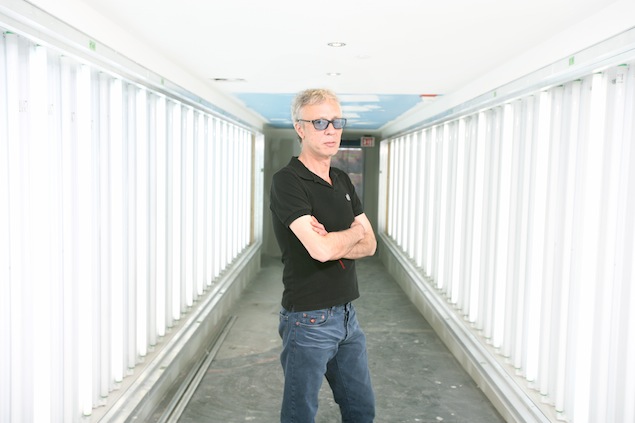
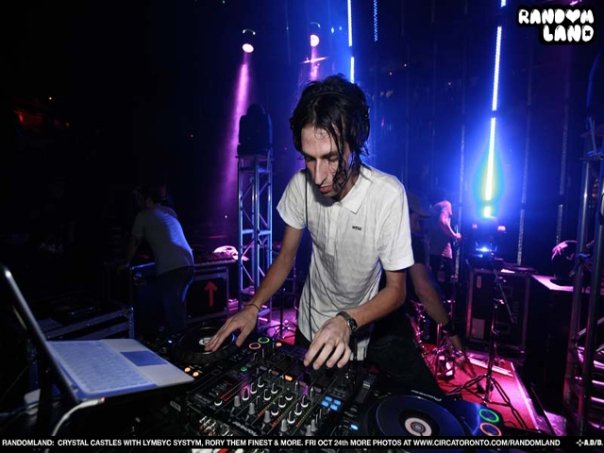

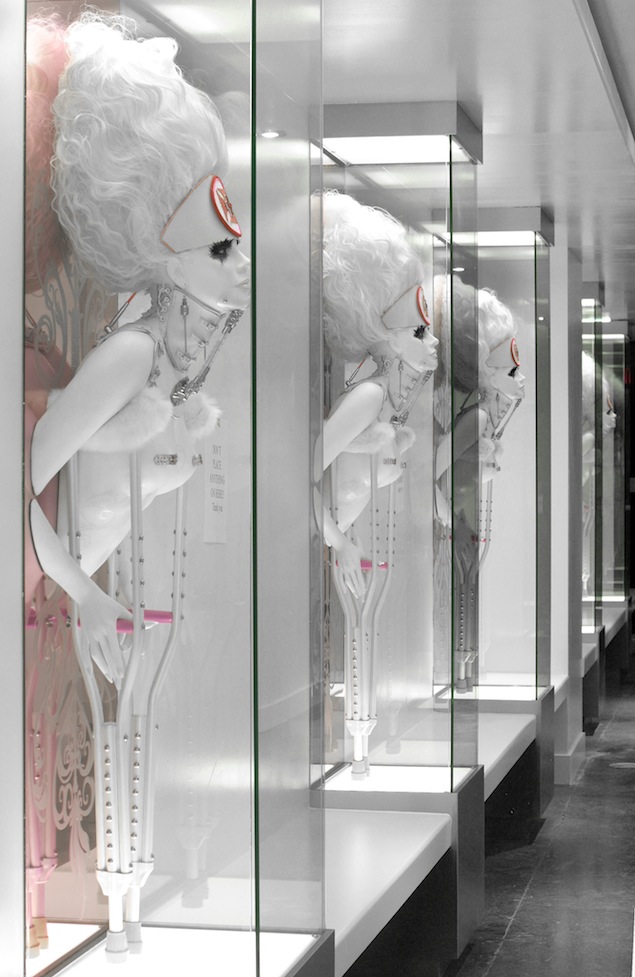



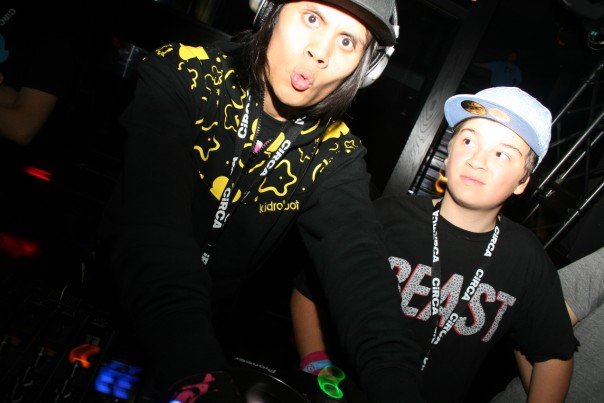
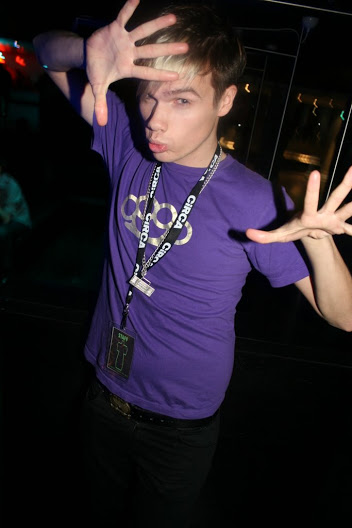

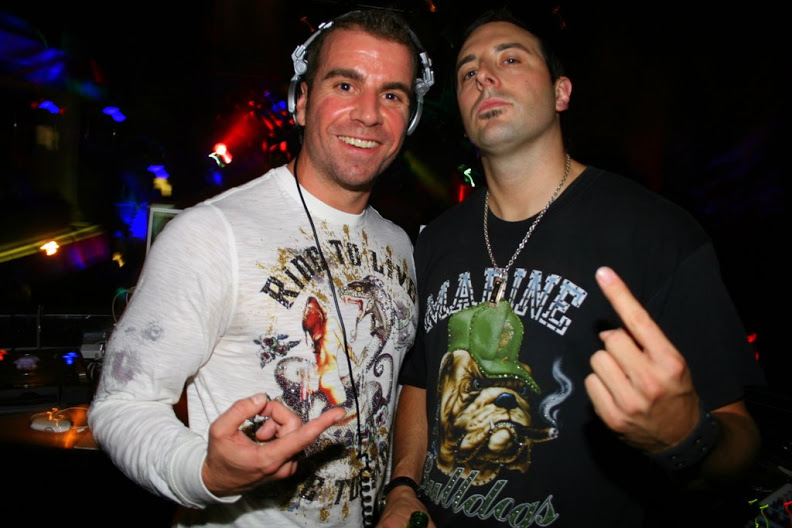


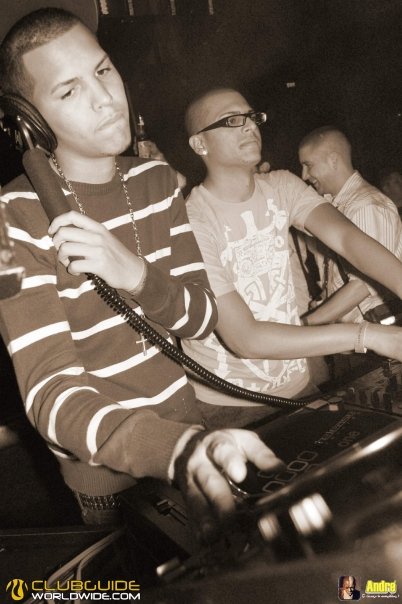



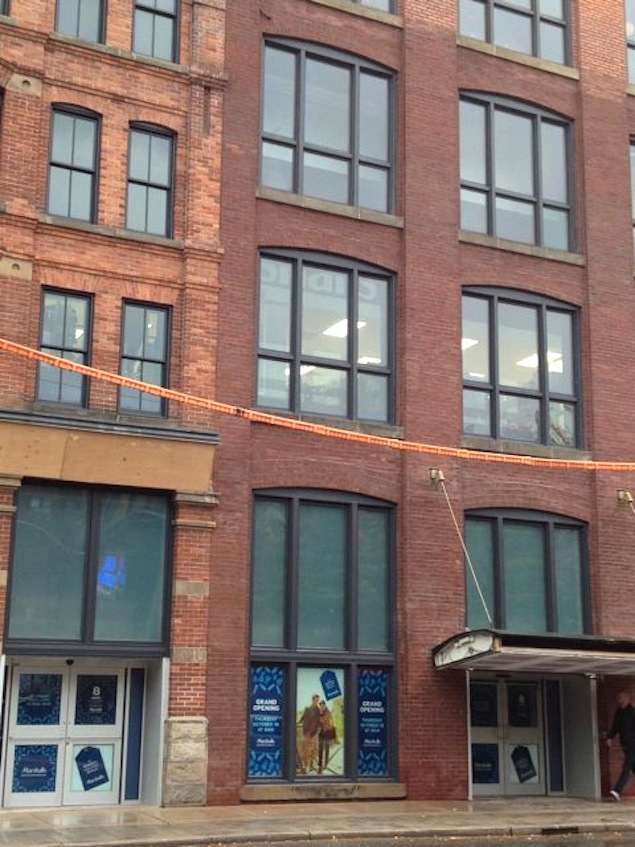
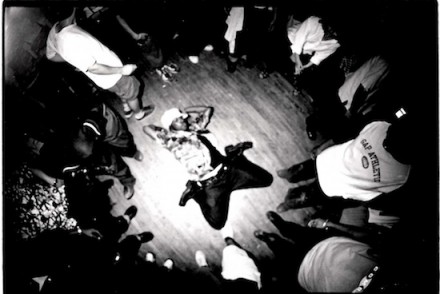

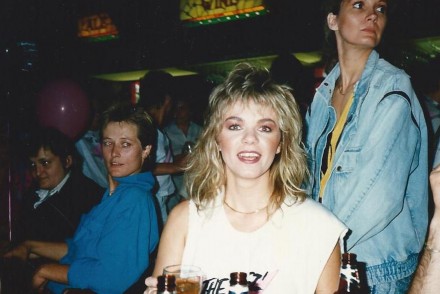

3 Comments
[…] Records and subsequently started to spin and promote at legendary venues, such as Guvernment, Circa and Comfort Zone. In 2007 he created DirtyCycle which focused on epic afterparties, boat cruises […]
I worked there. Everything about that place was a shit show ( including the clientele)
All comments in the string below have been republished from their original appearance on The Grid website. We’re including the readers’ comments as they add to these Then & Now stories. We look forward to reading new comments here as well.
Matt V
My gf and I “met” here (we had previously met through our mutual friend before but we didn’t really connect until our mutual friend’s birthday party here) 4 years ago, and now looking back, we would love to use the space to have our wedding – sad to see that it’s a Marshalls now. I remember when this place was still Sega City Playdium which too closed down as video game consoles became what they are today and no one would go to the arcades anymore. Signs of the times. 12:31 am on July 10, 2013
ksab
Circa was one of the first clubs I attended when I turned 19. Now at 25 I can honestly say I am completely over and tired of going to clubs to party. They are all boring,repetitive and generally the same. Circa was my absolute favourite club, until this day it still remains my favourite. No other club has EVER been able to top Circa for me. My heart broke when I heard it was closed. I had some of the best memories there when I was still an undergrad. I loved everything about it, it’s dark, cynical, mysterious wonderland theme. I loved that every time I went there it was like a new adventure. I would always get lost! And that is so much more fun than being packed like sardines in a tiny matchbox club. I am very sad that Circa is gone and I often walk by the building and can’t help but get upset when I see the vacant, empty state it’s in. A building that once was so full of life, music, laughter, noise, excitement.  I wish Circa would reopen it’s doors. 3:24 pm on June 6, 2013
Nim
Great Article. Lots of details. and although a disaster it takes a huge risk and alot of balls to open a super club like that. Kuddos to Peter for taking a vision and turning it to reality. 9:42 am on October 28, 2012
Mona G
I met some of my best friends and had the best times at Randomland. I only have the best mems. 6:04 pm on October 23, 2012
oize
I remember going there opening night. Complete disaster. Huge lines for drinks, bars looked like that had just been stocked (this story provided insight as to why, thank you) and credit card/debit terminals weren’t working. Couple that with the fact that if you lost your friends in the club you were FUCKED. Cell phone service was atrocious in that building. ADD programmed some great events there, though. It’s just too bad that, like Victor said, the city was shifting towards smaller venues on Queen and Ossington like The Social to party and hipsters didn’t want to travel to doucheland to party on a weekly basis unless there was a must-see DJ. 4:51 pm on October 23, 2012
Da Clubber
WOW time does change peoples minds…. Circa was a mess right from the start and Peter G was arrogant and thought he was the club king….. They hired no proven promoters who had a track record of holding down a party… Any Joe blow can pack the new hot spot but it takes someone who knows how to keep it fresh… Peter Gatien is no Charles K. in deed 7:36 pm on October 22, 2012
VictorStorm
Peter Gatien is no Charles K. By the time Circa was opening, Clubland had a target on it’s back and Toronto was shifting away from a mega-club type city into more of a bar type with King street and Ossington about to explode. Had Circa opened 10 years before it did…they might have had a chance at success. It will forever be known as financial disaster of epic proportions. ….and nothing else! 4:05 pm on October 22, 2012
Brian
The place was amazing, too bad they were not bringing the wright dj’s, that place deserved superstar international dj’ that is like Tiesto instead, they were going local, gay, and hip hop. Toronto will never see a mega club like that again, it was too beautiful for Toronto, Toronto does not have a world class nightlife. 2:35 pm on October 22, 2012
Markus
That place was a dud from the begging. Hordes of suburbanites descended on that area and ruined the authentic nightlife that was happening in that area. It turned into a bunch of bros puking, fighting and yelling. If there was anything decent from Circa it would of birth a new night in the city. Everything that started at Circa thankfully died there. No one misses that tourist trap cesspool. 2:21 pm on October 22, 2012
AG
Markus – clearly you never set foot in there on a Friday night… 2:34 pm on October 22, 2012
Mister E Man
Circa was the best…the ballroom on a Friday night was the best thing I’ve ever witnessed in Toronto nightlife and at that point I had been partying for a good 10-15 years. It will never be duplicated, thanks to everyone who made it possible!  1:23 pm on October 22, 2012